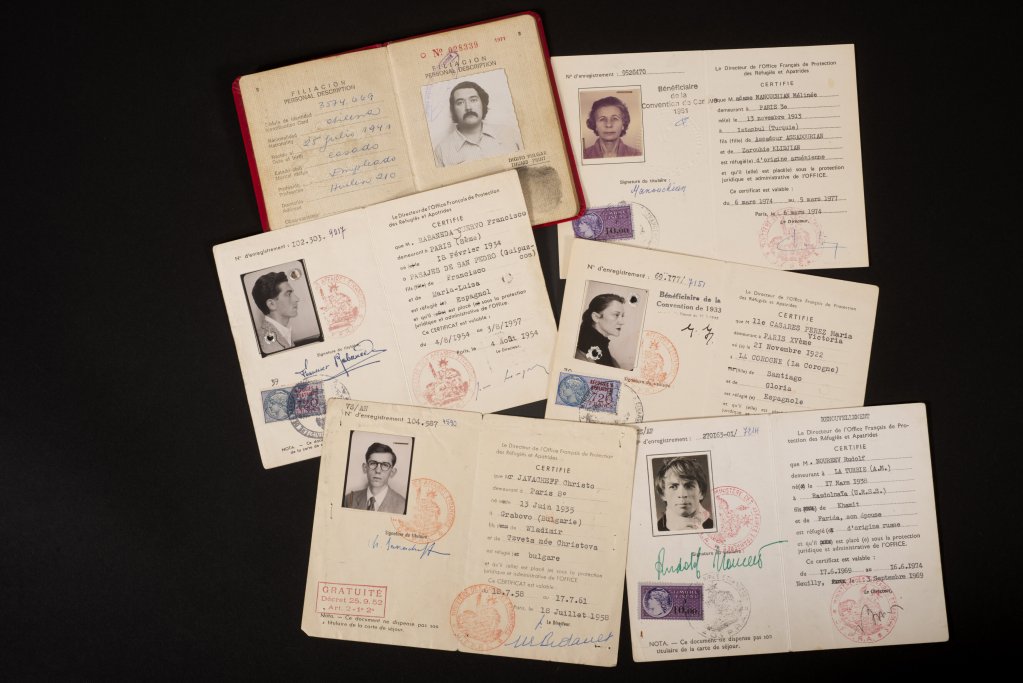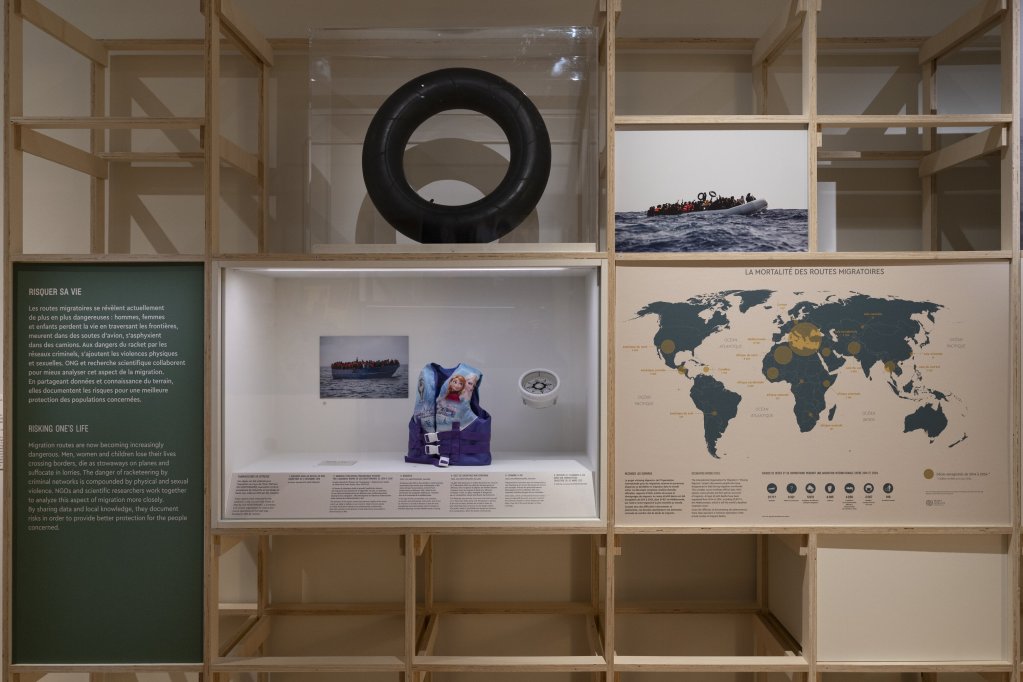An exhibition at the Musée de l'Homme in Paris delves into the complexity and diversity of human migration, far from polarizing statistics and debates.
The projected silhouettes of men, women and children move across the wall, evoking humanity perpetually in motion. A foghorn blowing and waves breaking along a shore could be the sounds that accompany both a farewell and a homecoming, a rupture and a reunion.
From the beginning, the exhibition "Migration, a human odyssey" at the Musée de l’Homme (Museum of Mankind) in Paris is an immersive experience. "We wanted to expose visitors to the complexity of migration," explains Sylvie Mazzella, co-commissioner of the exhibition. "In political debates, the figure of a refugee is often portrayed as someone undocumented, as the archetype of someone poor, alone and from the south."
Yet an overview of contemporary international migration shows a far more complicated situation. The idea for the exhibition came from a manifesto issued by the museum in 2018, stating, "all species migrate, whether they are plants, animals or humans, for diverse reasons."
Read AlsoEurope reports drop in asylum applications in 2024
Words for migration
The scientific committee for the exhibition, which involved some ten different disciplines, from archeology to genetics, from political sciences to geography, chose to begin the exhibition with some definitions in a section titled "migration words."
Migrant, immigrant, undocumented immigrant, refugee, expatriate: "an abundance of words and statistics published on the internet and in reports, creates fear and questioning among people," said Mazzella. The committee therefore decided to examine the words, who uses them and to what end.
"These words are not anodyne because there are legal categories associated with some, which are meant to trigger asylum protections [. . . ] There are also the words migrants use to define themselves for courage, like harraga in Arab, which means someone who burns borders," said Mazzella. The visitor is confronted by the various definitions and representations associated with the words through film posters, poems, quotes and administrative documents.
Read AlsoMigration to Europe – 2024 in pictures

Challenging common conceptions
Far from a "submersion" or "invasion," the percentage of humans living outside their country of origin in 2024 was relatively small: only 4 percent of the world's population. This represents 325 million international migrants out of a total population of 8.2 billion inhabitants. The vast majority of migrants move within their country or region, with neighboring countries often taking on the majority of refugees in the case of an environmental crisis or conflict.
"We chose to establish a picture of what we currently know about migration," said Mazzella. "And it happens that it contradicts the theories put forward in certain debates, especially the ideology of the 'great replacement' [a racist conspiracy theory that claims there is a plan to bring non-white immigrants into Western countries to replace whites]," she added.
The second part of the exhibition uses witness accounts from migrants to paint a picture of migration that might challenge some common conceptions. The visitor learns that it is not the poorest populations who migrate but more often those with a higher education and at least some resources : "one needs certain knowledge, like that of a language, there has to be a diaspora; these aren't a given for everyone," said Mazzella.
Another surprising fact: women currently make up 48 percent of all migrants, and there are increasing numbers of children along migratory routes as they accompany their mothers in transit or travel as unaccompanied minors.

Imagination as fuel for migrants
Although highly pedagogical, the exhibition tries to testify to the power of imagination as a factor that both drives migration and tries to put a brake on it. A displayed quote from Homer’s "The Odyssey" echoes the thoughts of all migrants, when Ulysses wonders about the country he is headed for, and the degree of hospitality he might receive.
"The originality of the exhibition is that it goes back in time to show that humans have always migrated, ever since Homo sapiens emerged in Africa," said Mazzella, referring to the exhibition’s third and final section, dedicated to humanity’s origins. In this part, a 54,000-year-old molar is displayed. The 2022 discovery from France’s Mandrin Cave provides evidence that Homo sapiens appeared in Europe 10,000 years earlier than previously believed, and interbred with other human species that existed at the time, like Neanderthals.
Migration remains a political subject, but the exhibition succeeds in going back to the roots of the human species' movements on the planet. The intrepid nature of humans led to genetic intermingling and other exchanges, which ultimately, "ensured the longevity of the species and guaranteed its survival" said Mazzella.
